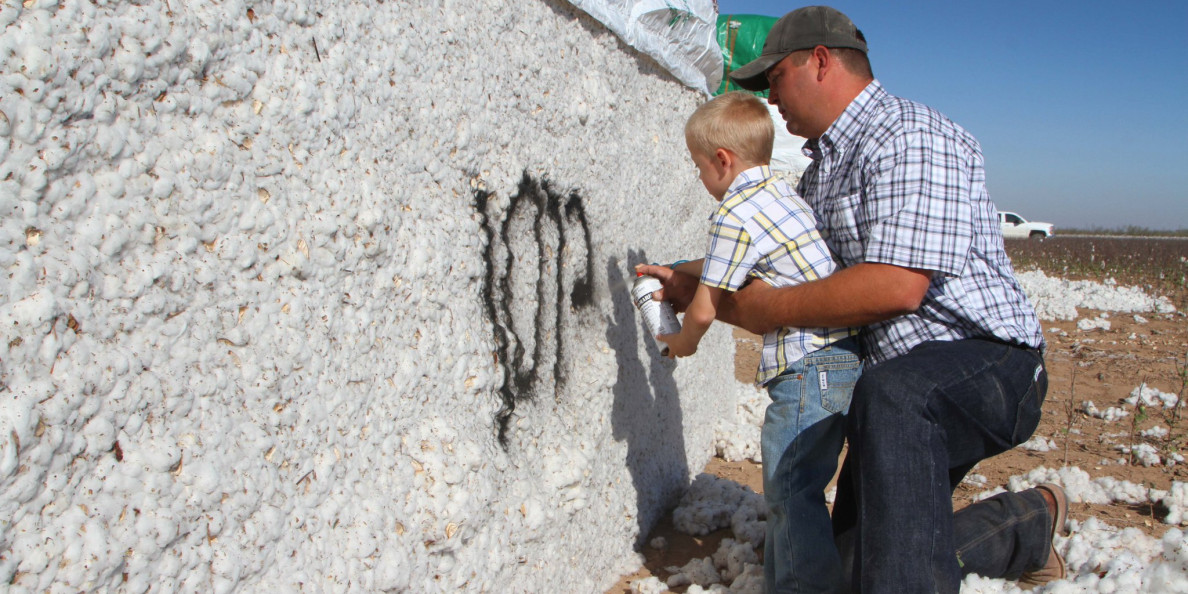By Jeff Thompson, Autauga Quality Cotton Association
With only 8 trading sessions remaining prior to first notice date, it’s hard to imagine we will see December reach 80 cents again. Trading in a 400-point range of 76 and 80 cents for a couple of months, it had every opportunity last week to break out to the high side.
Wednesday, perceiving the mid-term elections results as favorable, the market closed just under 79 cents, gaining 153 points on the day. Immediately after the release of USDA’s favorable November Supply/Demand numbers on Thursday, it traded as high as 80.50 but only briefly before quickly returning to 79 cents.
Since that time, the market has not reacted rationally. Of course, who says it has to? Over three cents has been lost in the last three sessions closing Tuesday at 75.86. This we find rather hard to comprehend considering the damage being inflicted on this crop due to adverse weather conditions Beltwide.
The Underlying Current: Demand – Or Lack Of It?
The failure to sustain these rallies stems from an underlying current within the market that demand may be slipping. Once a driving force behind prices the growing uncertainty surrounding cotton consumption has the funds and spec community taking pause. For several weeks they have been methodically trimming their long positions.
Proponents of declining demand would point you to the weekly export sales reports which have been mediocre at best. Cancellations have been more prevalent predominantly from China which isn’t surprising in light of the ongoing trade war with the U.S. Also, a weak sales basis such as we’re now experiencing is often indicative of declining sales volume.
In the other camp, there are those of us who feel this isn’t the beginning of a downward trend but rather a seasonal hurdle which will improve in time. First and foremost, cotton fundamentals today are better than when prices were at 94 cents. In addition, the U.S. crop is getting smaller every day, as is India’s. There is little fear of us eating this cotton; it will be sold.
There are already 9.5 million bales of this year’s crop committed to sales, with a large percentage still to be shipped. Even though our fiber quality doesn’t match previous crops, buyers will be looking as always to the U.S., Brazil and Australia for their cotton needs. Other producing countries don’t have sufficient quantities nor the preferred qualities to satisfy world consumption.
The possibility exists that apparel manufacturers could shift to more polyester use, which would certainly alleviate the quality issue, but for now polyester prices aren’t competitive thus discouraging such a move. So, buyers will return, and any semblance of renewed demand should help move this market back into the 80s.
Of course, the quickest way to pump life back into the market is a resolve in trade relations with China. Absent that, once again patience will be a virtue. Presently, look for commodities to be more influenced by the volatile financial markets and currency valuations.
How Much Patience Do You (Or Your Lender) Have?
What about short-term market strategy? The most immediate concern for anyone with bales on call is the approaching first notice date. These sales based on December must either be fixed or rolled to March over the next week. Regrettably, at present the cost would be around 180 points, as that’s the current spread between December and March.
Little indicates that this spread will narrow, making this decision more difficult. One must weigh the cost and immediate need for money with the potential for price gains over the next couple of months. This is an individual decision so analyze your situation and consult your marketing advisor.
For those selling cotton on recaps, as mentioned, the sales basis is weaker than what we’ve come to expect. 41 grades and light spots are being discounted heavily in the market because such cotton is readily available. High grades, 31-3-36 and better, are bringing a premium in the range of 250 to 350 points though one would expect a stronger basis knowing the scarcity of it.
Our recommendation would be to search for the best basis, put it on call stopping storage, take the provisional payment, and wait out the futures market to price. Choice Cotton would be glad to assist you with this by soliciting bids and advising you on offers.


